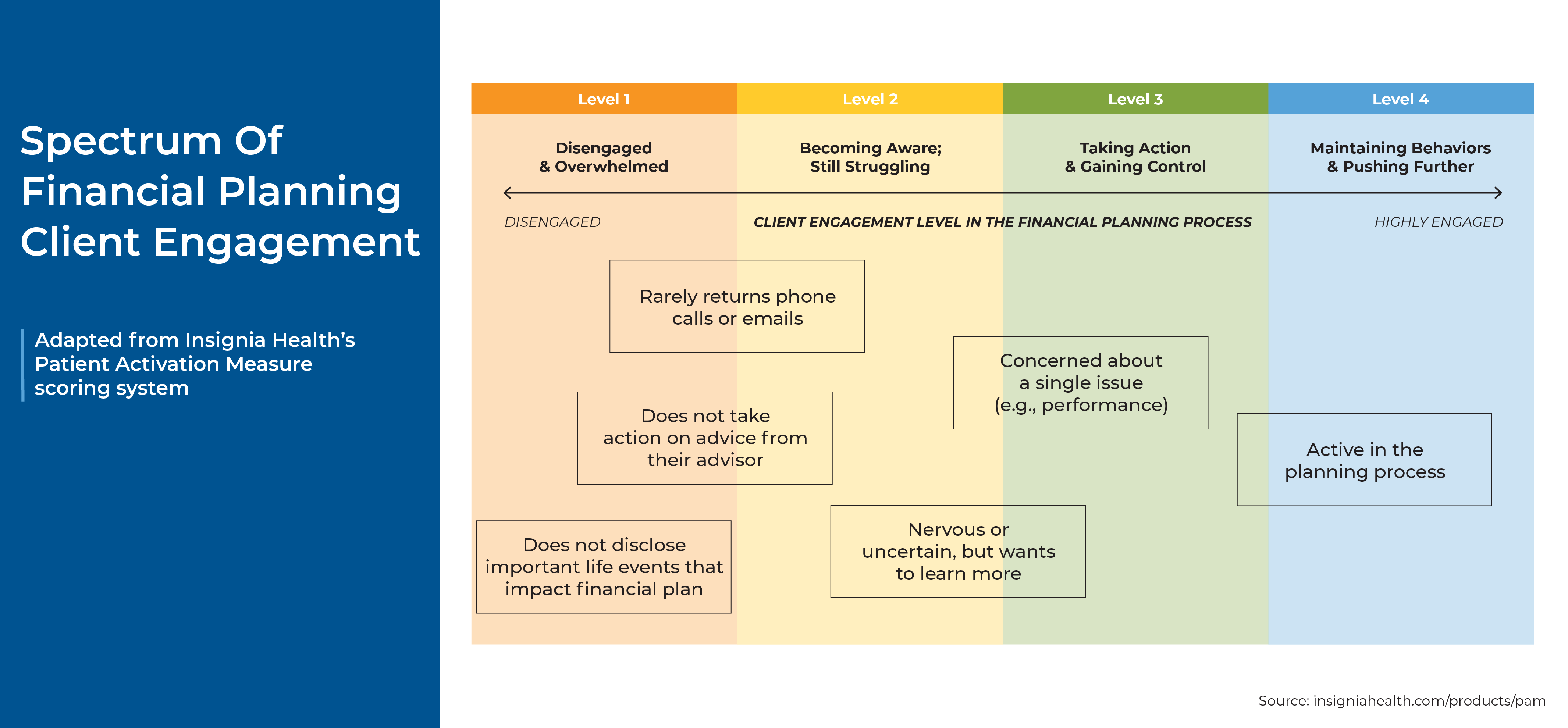After advisors do all of the work of bringing on a new client (Marketing! Prospecting! Onboarding! Compliance!), it can sometimes feel natural to let the relationship go into “maintenance mode”. And while all may appear well on the surface – the client rarely contacts the advisor with problems but they show up for every annual meeting – they may actually be feeling quite disengaged with the financial planning services being provided. This can result in fewer referrals and even the loss of the client, who might eventually opt to move their accounts to another (more appealing) advisory firm.
Some types of client disengagement can be difficult to detect until it’s too late, as client disengagement manifests, by definition, as a lack of action, up until the client decides to leave the advisor altogether. Given how difficult it can be to detect forms of disengagement, it may be helpful to think of different levels of client engagement as part of a spectrum, where the most engaged client recognizes their advisor as a partner and guide; they are open to exploring new ideas proposed by their advisor, ask questions, and are willing to develop and maintain good habits. Clients on the lower levels of client engagement may tend to disregard their advisor’s instructions or have a limited understanding of what their advisor can do, simply viewing them as problem-solvers for pain points and not as sources of guidance to plan for – and reach! – important goals.
One particular key attribute of many disengaged clients is that they tend not to reach out when issues arise, which can create a vicious cycle precluding an advisor from providing deeper value (because they didn’t know there was an opportunity to do so in the first place) and resulting in the client’s failure to recognize the advisor as someone who could have provided guidance and value, reinforcing their decision not to reach out for help… and so on.
However, advisors can address client disengagement by using questions that encourage client participation and invite them to engage more actively in the financial planning process. Questions such as “What is different from the last time we met?” and “What changes are coming up soon?” can help to reveal relevant talking points and planning opportunities at the beginning of the meeting that the disengaged client may not have thought about mentioning on their own. Additionally, checking in with clients deeper into the meeting to monitor any potential financial anxiety can facilitate a more open and honest discussion if there are issues that a client has, but have not yet surfaced. For example, advisors might ask how confident the client feels with their financial plan or what worries them most (or least) about their finances. Finally, asking for feedback at the end of the meeting can help the client recognize that the advisor values their engagement and input; it also helps them recognize the progress they’ve made and the advisor’s role in achieving that progress. Facilitating another opportunity for honesty and discussion provides another way to build trust and encourage client engagement.
Ultimately, the key point is that highly engaged clients not only provide more referrals and recognize their advisors’ value, but they also tend to be more enjoyable to work with. And by carefully choosing the right questions to ask, advisors can recognize their clients’ engagement levels and ensure that more of them are (and stay!) fully engaged!


